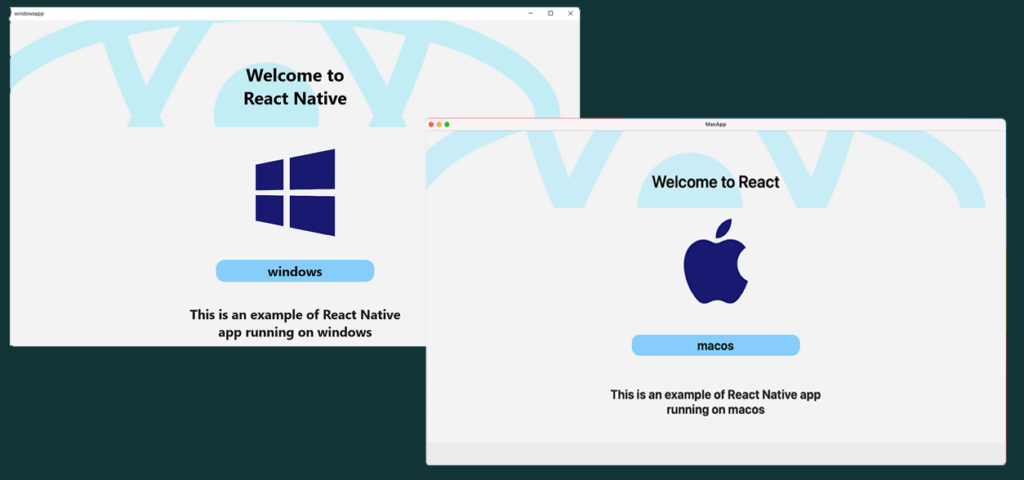Can React Native Build Desktop Apps? The React Native desktop framework allows developers to build cross-platform desktop applications for Windows and macOS using just a single code base.
Table of Contents
Introduction
In the ever-evolving landscape of software development, the ability to build applications that run seamlessly across various platforms has become a top priority. Enter React Native, a popular JavaScript framework originally designed for building mobile applications. Over the years, React Native has made significant strides, and one of the most intriguing developments is its potential to build desktop apps.
In this article, we’ll explore the fascinating world of React Native and its foray into desktop application development. We’ll dive into the capabilities of React Native for desktop, discuss its advantages and limitations, and provide real-world examples of desktop applications built with this technology. So, can React Native really build desktop apps? Let’s find out.
React Native: A Quick Overview
Before we delve into the desktop realm, let’s take a moment to understand what React Native is and why it’s such a popular choice for application development.
React Native is an open-source framework developed by Facebook that allows developers to build mobile applications using JavaScript and React. It gained immense popularity due to its ability to create cross-platform apps with a single codebase. By leveraging native components, React Native enables developers to create applications that look and feel like native apps on both iOS and Android platforms.
React Native Desktop:
While React Native was initially designed for mobile app development, its versatility has led to its adaptation for other platforms, including the web and desktop. The React Native team, in collaboration with the open-source community, has been actively working on bringing React Native desktop environments. This project, known as “React Native for Windows + macOS,” has made significant progress in recent years.

Key Features of React Native Desktop
To understand how React Native desktop works, let’s explore some of its key features:
- Cross-Platform Compatibility: React Native for desktop extends the promise of cross-platform development to include Windows and macOS, allowing developers to write code that runs on all three platforms.
- Native Components: Just like in mobile development, React Native for desktop allows developers to utilize native components and modules, ensuring a truly native look and feel for desktop applications.
- Hot Reloading: Developers can take advantage of hot reloading, a feature that allows them to see the changes they make in real-time without restarting the application.
- Community and Ecosystem: The React Native community is robust, and many third-party libraries and modules are available for desktop development, enhancing productivity and capabilities.
- Support for Existing Codebases: If you’ve already developed a mobile app using React Native, you can often reuse a significant portion of your codebase for desktop app development, saving time and effort.
Examples of React Native Desktop Applications:
To illustrate the capabilities of React Native desktop, let’s take a look at some real-world examples of desktop applications that have been successfully built using this framework:
1. Microsoft Teams
Microsoft Teams, a popular collaboration platform, uses React Native for its desktop application. This choice allows Microsoft to maintain a consistent user experience across various platforms, including Windows and macOS.
2. Skype
Skype, the widely used communication tool, also utilizes React Native for its desktop app. This enables Skype to deliver a seamless experience to users on both Windows and macOS.
3. Discord
Discord, a communication platform popular among gamers, uses React Native for its desktop client. This choice ensures a smooth and consistent user interface for gamers on different operating systems.
4. Visual Studio Code (VS Code)
VS Code, Microsoft’s popular code editor, is another notable example. It’s built using Electron, which allows the use of web technologies, including React Native, to create desktop applications.
These examples demonstrate the adaptability and power of React Native for desktop application development. By using a single codebase, these applications provide a consistent user experience on multiple platforms.
Code example for React native Desktop and MacOs
Creating a complete React Native Desktop and react native macOS app from scratch can be a complex process, and the code would be quite extensive. However, I can provide you with a basic example of how to get started with setting up a React Native project that targets both desktop and react native macOS platforms. Keep in mind that you’ll need to have Node.js, npm (Node Package Manager), and React Native CLI installed on your system.
- First, let’s create a new React Native project: New Project In React Native
- Install the required dependencies:
// Install React Native Desktop
npm install --save react-native-desktop
// Install React Native macOS
npm install --save react-native-macos- Now, you’ll need to make some configuration changes to enable building for both desktop and macOS platforms. You’ll typically set up different entry points and configurations for each platform. Start by creating separate entry files for react native desktop and react native macOS:
Create index.desktop.js:
// index.desktop.js
import { AppRegistry } from 'react-native';
import App from './App'; // your main app component
// Register the app for desktop
AppRegistry.registerComponent('MyDesktopApp', () => App);
Create index.macos.js:
// index.macos.js
import { AppRegistry } from 'react-native';
import App from './App'; // your main app component
// Register the app for macOS
AppRegistry.registerComponent('MyMacOSApp', () => App);Next, configure your package.json to have different build scripts for desktop and macOS. Update your scripts section like this: This step is If you are not using Expo:
"scripts": {
"start-desktop": "react-native-desktop start",
"start-macos": "react-native-macos start",
"android": "react-native run-android",
"ios": "react-native run-ios"
}- Finally, you can run your app for either desktop or macOS using the following commands:
For desktop:
npm run start-desktopFor macOS:
npm run start-macosThis is just a basic setup to get you started with a React Native app that targets both desktop and macOS. Depending on your project requirements, you’ll need to implement platform-specific components, styles, and functionalities. Additionally, you might need to handle navigation and other aspects of your app accordingly.
Advantages of Using React Native for Desktop
Now that we’ve seen some real-world examples, let’s explore the advantages of using React Native for desktop app development:
1. Code Reusability:
Developers can reuse a significant portion of their existing React Native codebase, reducing development time and effort.
2. Native Performance:
React Native for desktop leverages native components, ensuring high performance and a native look and feel.
3. Cross-Platform:
It allows you to target multiple desktop platforms (Windows and macOS) with a single codebase.
4. Active Community:
With a thriving community and a wealth of third-party libraries, you have access to a wide range of resources to enhance your desktop app.
5. Hot Reloading:
The hot reloading feature speeds up development by instantly reflecting code changes in the running application.
Limitations and Considerations
While React Native for desktop offers many advantages, it’s important to be aware of its limitations and considerations:
1. Platform-Specific Code:
Despite code reusability, some parts of your application may require platform-specific code to accommodate differences between Windows and macOS.
2. Development Environment Setup:
Setting up the development environment for React Native for desktop can be more complex than mobile app development.
3. Desktop-Specific UI:
Desktop applications often have distinct UI requirements compared to mobile apps, and accommodating these differences can be challenging.
4. Maturity:
While React Native for desktop has made significant progress, it may not yet be as mature as some other desktop application development frameworks.
FAQs
Q1: Can I use React Native for desktop app development on Linux?
A1: As of now, React Native for desktop primarily targets Windows and macOS. While there are efforts to support Linux, it may not be as comprehensive.
Q2: Are there any limitations to using React Native for complex desktop applications?
A2: React Native for desktop is well-suited for many types of desktop applications, but complex apps with highly specialized UI requirements may require additional platform-specific development.
Q3: Is React Native for desktop a good choice for a small development team?
A3: Yes, React Native’s code reusability can be especially advantageous for small teams with limited resources.
Conclusion
In conclusion, React Native has made significant strides in the world of desktop application development. While it was originally designed for mobile apps, its adaptability and cross-platform capabilities have paved the way for its use in desktop environments, including Windows and macOS.
By leveraging native components, hot reloading, and a thriving community, React Native for desktop offers a compelling option for developers looking to create cross-platform desktop applications efficiently. While it may not be suitable for all types of desktop apps, it has proven to be a valuable tool for many organizations and developers aiming to deliver consistent experiences across platforms.
So, to answer the question, “Can React Native build desktop apps?”—the answer is a resounding “Yes!” With the right approach and a solid understanding of its capabilities and limitations, React Native can be a powerful choice for your next desktop application project.

